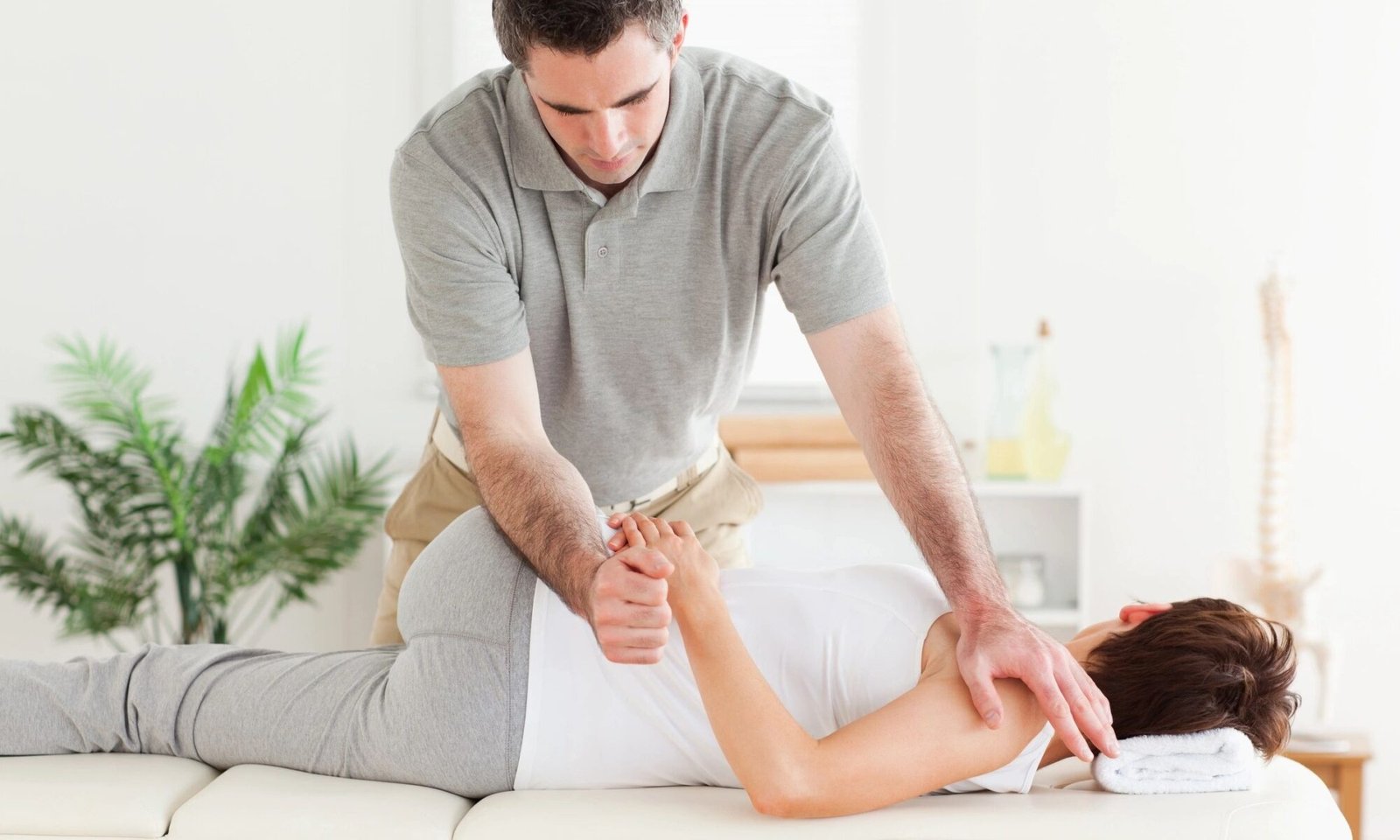Causes Of Bone Pain And Treatment Options
Bone pain is a form of musculoskeletal pain that results in tenderness and discomfort felt in different bones, and joints of the body (majorly because bones come together to make a joint). Bone pain can occur in the upper body or the lower body. However, the majority of bone pain felt in the lower body commonly results from injuries such as in bone pain back of heel, bone pain big toe, and bone pain on side of foot.

The causes of bone pain vary, some are easily identified, for instance, lower leg bone pain from a road traffic accident is easily traced back to trauma. However, some causes of bone pain are secondary to disease conditions, for instance, lower back bone pain, bone pain in thigh, and bone pain in knee may be radiating pain as a result of prostate cancer metastasizing to the bones.
Therefore, for any kind of low pain especially persistent or chronic pain, it is important to always visit the health care provider to identify the underlying cause and for adequate treatment (1).
Description Of a Typical Bone Pain
The basic character of bone pain is usually described as dull aching, manifesting from the inner part of the body. On palpation, the overlying skin can appear tender and may hurt mobility.
Most times, individuals with bone pain can locate the site of the pain. In pain radiating to other parts, the initial or starting bone pain is also easily identified by the patient. For example, knee bone pain may manifest as lower leg bone pain but the patient can easily describe the initial location as the knee.
Bone pain secondary to trauma or an open bone fracture from trauma may be characterized as sharp and very severe pain with a location pinpoint to the injury site.
Other important pain features that will be of help in the treatment of patients with bone pain are:
- – The location where the bone pain is most severe
- – If the pain is recurrent or persistent
- – If the pain is associated with any particular timing of the day
- – When the pain is worse
- – Any aggravating or relieving factors
- – Any radiation of the bone pain to other parts of the body, for instance, thigh bone pain may radiate to the knee (1).
8 Causes Of Bone Pain According To Location
Bone pain in the lower body has various etiologies and risk factors. Most of the times different causes are associated with different anatomical locations, which is the best way to discuss the causes of bone pain.
Below are some of the highlighted causes:
1. Bone pain side of foot
Bone pain on side of foot also called lateral foot pain is a type of bone pain that spans through the foot side including the ankle. It may be mild or severe which can prevent one from fee moving of the lower limbs.
Some of the causes of bone pain side of foot are:
- – Cuboid syndrome
This occurs as a result of the partial dislocation of the cuboid bone, and the cuboid bone is one of the lateral bones of the foot. Hence, its manifestation is bone pain on side of foot.
Cuboid syndrome is usually secondary to vigorous sports activities for a long period without breaks in between. Putting on undersized or very tight shoes is another traceable cause of the cuboid bone’s dislocating from its original anatomical location.
Most times cuboid bone syndrome resolves on its own even before diagnosis occurs. It can however in certain instances lead to chronic bone pain on side of foot and weakness.
- – Ankle sprain
An ankle sprain occurs secondary to ligament injury of the ankle and foot. It accounts for one of the commonest causes of bone pain side of foot, amounting to 85% of recorded data. It can occur with or without a fracture or a dislocation.
- – Bunions
Bunions are a common defect of the bone characterized by internal rotation of the big toe towards the direction of the four other toes. This results in the majority of the body weight bearing to the lateral foot during standing or while walking consequently, this manifests as bone pain on side of foot (2).
2. Lower leg bone pain
Pain in the lower leg is characterized by bone pain below the knee joint. The affected bones include the tibia, the fibula, and the bones of the foot. Lower leg bone pain is caused by the following:
- – Fracture
A fracture which is a break in the continuity of a bone can affect almost all bones of the body including, the tibia, fibula, and bones of the foot. Fracture is the commonest cause of lower leg bone pain.
- – Cancer
Lower leg bone pain from cancer usually occurs as a result of a direct cancer of the bone affecting the lower leg, called osteosarcoma. It can also result from a distant cancer metastasizing to the lower leg bones as in prostate cancer.
- – Trauma
Direct trauma to the bone either from a fall or from a blunt injury usually results in acute, and intense lower leg bone pain (3).
3. Thigh bone pain
Thigh bone pain commonly manifests from any injury or condition that affects the femur bone, this is because the femur bone is the single long bone located in the thigh.
The following are some of the causes of thigh bone pain:
- – Osteomyelitis
Osteomyelitis of the thigh bone is a bone infection that affects the thigh bone. This is mostly a bacterial infection caused by the microorganism Staphylococcus aureus. Osteomyelitis of the long bone is either from a local infection or arising from a distant infection in the body or ongoing septicemia in the body.
As soon as thigh bone pain starts to manifest, it is best to visit the hospital immediately for diagnosis and adequate treatment. The best treatment for osteomyelitis if diagnosed early is the use of antibiotics but in chronic osteomyelitis, surgery may be indicated.
- – Patellofemoral pain syndrome
Patellofemoral pain syndrome is a common cause of bone pain in thigh, especially in women and in athletes. It mostly occurs from joint overuse in sport training causing wear and tear of the cartilage located under the kneecap.
The clinical manifestation often includes bone pain in thigh, and pain at the anterior part of the knee joint, especially when in a squatting position or prolonged sitting. The pain however is described by the patient to be a chronic dull aching pain.
- – Fracture
The femur is the bone of the thigh commonly fractured in trauma. Bone pain in thigh is usually described as aching, and severe and some patients give it a severity score of 10/10 when describing the thigh bone pain (4,5).
4. Bone pain on top of foot
Bone pain on top of foot is one of the complaints of foot pain in the clinic. Studies have revealed that the majority of the time, bone pain on top of foot occurs as a result of injury, use, and wear from friction from undersized tight shoes.
The following are highlighted causes of bone pain on top of foot:
- – Stress fracture
A stress fracture is one of the commonest and most recorded causes of bone pain on top of foot. It occurs as a result of a fracture to the metatarsal bone from overuse and pressure. This is commonly seen among military men in training.
- – Deformity of toe
A deformity of a bone either from a congenital or an acquired deformity will also cause bone pain on top of foot. A congenital deformity of the big toe, or an acquired deformity from fracture secondary to trauma will lead to bone pain big toe as well as bone pain on top of foot.
- – Tarsal coalitions
In tarsal coalitions, there is an abnormally formed connection between the tarsal bones. The tarsal bones consist of the bones located at the heel of the foot, ankle, and arch. When this coalition occurs between bones, it manifests as recurrent and moderately severe bone pain on top of foot, and it is commonly seen in children (6).
5. Bone pain tibia
Tibia and fibula are the two major bones located in the leg below the knee joint. The tibia makes up the shin of the leg and of the lower leg bones, it is commonly fractured. The bone pain tibia is commonly called the shin splint.
The following are some of the risk factors for bone pain tibia or a shin splint:
- – Runners who continuously run on a rough or uneven track, or those who suddenly increase speed.
- – Dancers
- – Bone pain tibia is also seen in individuals with flat feet or high arches. This prevents the bones and the muscles from protecting the leg from impact.
- – Military men who stand or walk for a long time. Other professionals who will have to walk for a long time are also prone to having bone pain tibia.
- – Unsupportive foot wears during daily exercise
- – Nutrient deficiency as seen in vitamin D also predispose an individual to shin lifts.
- – Underlying bone disease such as osteoporosis or osteopenia (7).
6. Knee bone pain
The knee is made up of the bones coming together ( femur, tibia, alongside patella bone), the ligaments, tendons, and cartilage. Whenever there is a problem with any of these components that make up the knee joint, it can manifest as bone pain in knee. Also, direct trauma or infection to any of the bony components will cause knee bone pain.
The following are some of the causes of knee bone pain:
- – Osteoarthritis
Osteoarthritis is one of the commonest causes of knee bone pain, especially in adults. It is an inflammatory disease of the knee joint that results from wear and tear of the knee joint. When this occurs, patients complain of a dull aching pain from inside, it can also be warm to touch alongside a red discoloration of the overlying skin,
- – Patella fracture
The Patella’s bone is a small circular bone that is sited directly in front of the knee joint. Direct trauma to the knee joint can result in a fracture of the patella bone. A fall on the knee will also result in a fracture of the patella bone. When a patella fracture occurs, it results in bone pain in knee.
- – Dislocation
Dislocation which means displacement of the bones of a joint can affect any of the bony components of the knee joint resulting in knee bone pain. There can be dislocation of the femur or tibia from their meeting point, or dislocation of the patella, the knee cap. When this happens, it results in bone pain in knee (8).
7. Bone pain back of heel
The following are the causes of bone pain back of heel:
- – Haglund’s deformity
This deformity is also called a “pump bump”. It is a deformity of the bones at the heel leading to enlargement of these bones. In case of wear and tear from continuous pressure to the heel from undersized shoes result in irritation of the bones, and in such case manifest as bone pain back of heel.
- – Stress fracture
A stress fracture is also another commonly reported cause of bone pain back of heel. This occurs as a result of continuous stress as seen in sports, and manual labor on the heel. Stress fracture resulting in a fracture to the metatarsal bone can also result in bone pain back of heel.
- – Sever’s disease
Sever’s disease account for the commonest cause of bone pain back of heel in children and also in young adults. It occurs as a result of continuous microtrauma to the heel bone’s growth plate. The peak of this disease is seen between seven to fifteen years of age (9).
8. Bone pain big toe
The following are the common causes of bone pain big toe:
- – Sesamoiditis
Sesamoiditis refers to inflammation of the sesamoid bones. This condition commonly occurs when there is inflammation or irritation of the tendons surrounding the sesamoid bone sited after the big toe, leading to bone pain big toe. It is commonly seen in runners.
- – Fracture
A not-so-common cause of bone pain big toe is a fracture to the big toe which often result in intense pain, swelling, and deformity of the big toe (10).
Treatment For Bone Pain
There are several treatment options available for bone pain, some concerning the etiology of the bone pain. Some of the treatment options for bone pain are:
- – Analgesics
Analgesics are the first line of drugs given to patients with bone pain especially from stress, or from conditions that may be causing the pain as fractures. Pain relievers can be gotten over the counter or based on a doctor’s prescription. Examples of pain relievers commonly prescribed are ibuprofen and acetaminophen.
- – Antibiotics
In conditions such as osteomyelitis, a broad spectrum of antibiotics can be prescribed to help kill and stop the action of the invading microorganism thereby treating the infection adequately.
- – Vitamin and calcium supplements
For individuals with bone deformities from mineral or nutrient deficiency, the doctor may be prescribed a vitamin D or calcium supplement help boost the nutritional level of the patient and restore good health.
- – Cancer treatment
A commonly identified cause of bone pain lower body is cancer. Adequate and efficient treating all forms of cancer will help prevent metastasis to the bone and prevent bone pain.
- – Surgery
Surgery is not usually indicated in the treatment of bone pain, except in cases of fracture where surgery is required to reduce and restrict the broken bone to bring about bone healing. Surgery is also indicated in the cases of bone deformity from other causes not amendable to physical therapy. Surgery may also be needed to remove cancerous bone in bone cancer, osteosarcoma (11).
Summary
Bone pain or tenderness can be a concerning issue that requires prompt attention from a healthcare provider. The causes of bone pain can vary from simple injuries such as bone bruises to more complicated health issues such as infections and cancers.
Unexplained bone pain, especially when it is persistent or worsening, should be evaluated by a doctor to determine the cause of the pain. While there are a variety of possible causes related to bone pain, some common treatments include rest, over-the-counter pain medications, and physical therapy.
In some cases, more intensive medical interventions may be necessary such as surgery or prescription pain medication. Whether the cause of the pain is due to a tailbone injury, bruise, or another condition, it is important to seek medical attention as soon as possible to address any underlying health issues and begin appropriate treatment.
References:
- 1. https://my.clevelandclinic.org/health/symptoms/24619-bone-pain
- 2. https://www.medicalnewstoday.com/articles/321176#causes
- 3. https://www.webmd.com/pain-management/lower-leg-pain-causes-and-treatments
- 4. https://www.buoyhealth.com/learn/thigh-pain
- 5. https://www.verywellhealth.com/thigh-pain-causes-treatment-4174433
- 6. https://www.foot-pain-explored.com/pain-on-top-of-foot.html
- 7. https://my.clevelandclinic.org/health/diseases/17467-shin-splints#:~:text=Shin+splints+occur+when+the,bone%2C+muscles+and+connective+tissues.
- 8. https://my.clevelandclinic.org/health/symptoms/21207-knee-pain
- 9. https://www.medicalnewstoday.com/articles/181453#causes
- 10. https://www.medicalnewstoday.com/articles/big-toe-pain#common-causes
- 11. https://www.healthline.com/health/bone-pain#treatments


























